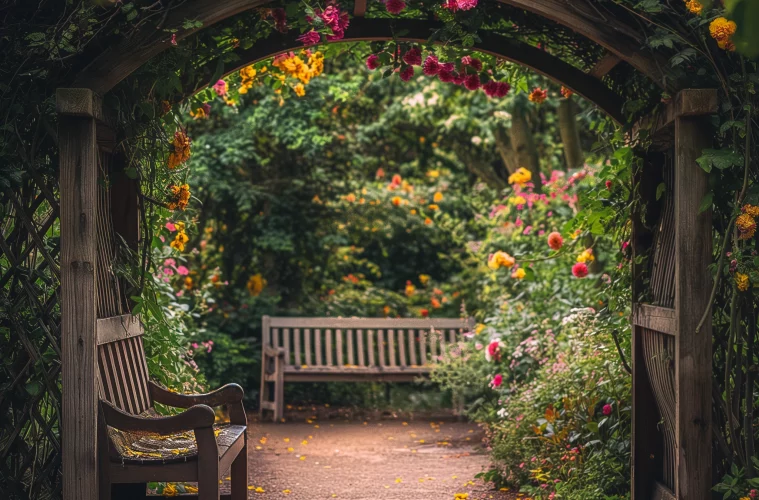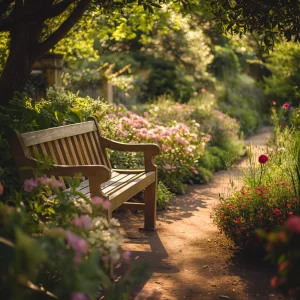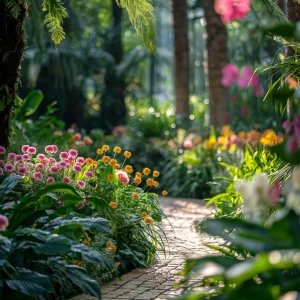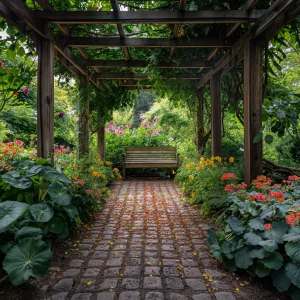Urban Sanctuaries in the Heart of the City
In London’s ceaseless bustle, hidden gardens and squares offer tranquil sanctuaries that many, even locals, might not be aware of. These secluded spots starkly contrast the urban sprawl surrounding them, acting as peaceful retreats where one can escape the frenetic pace of city life. Places like Notting Hill, Knightsbridge, Chelsea, and Hampstead Hill harbour these quiet gems, offering serene environments that blend historical charm with modern-day seclusion.
One notable example is the St. George’s Square in Pimlico. Originally laid out in the 1830s, this garden square is enclosed by classic London townhouses, with pathways lined by mature trees and seasonal blooms. The square serves as a visual delight and a quiet nook where one can enjoy moments of solitude amidst the city’s clamour.
Historical Echoes and Cultural Tapestry
These garden squares are not merely aesthetic features; they are deeply woven into the fabric of London’s historical and cultural narrative. Each square tells a story, reflecting the architectural styles and societal changes through the centuries. From the Georgian and Victorian influences evident in the squares of Belgravia to the Edwardian grandeur found in parts of Hampstead, these spaces offer a living history lesson to those who walk their paths.
Phoenix Garden, located in the West End, stands out as a poignant symbol of resilience and recovery. Born from the ashes of World War II devastation, it represents not only the physical rebuilding of the city but also the community’s determination to create beauty from bleakness. This garden is a testament to London’s spirit, flourishing as a green space commemorating the city’s endurance and revival.
A Hub for Biodiversity
Amidst these historical narratives, London’s garden squares also play a crucial role in urban ecology. These green spaces are vital havens for biodiversity, supporting a variety of flora and fauna. In Rosmead Garden, which gained fame from its appearance in the film “Notting Hill”, one can find an array of both native and exotic plants that create a vibrant, ever-changing tapestry of colours and textures throughout the seasons.
These gardens beautify the city and contribute significantly to its ecological health. They serve as key habitats for pollinators and birds, enhancing urban biodiversity and offering crucial green corridors that help sustain wildlife populations within the city.
Architectural Harmony and Design
The aesthetic appeal of these gardens is no accident. Their designs often reflect a thoughtful integration of nature and architecture, where every element—from the layout of the paths to the choice of plant species—is carefully considered. This meticulous design approach results in spaces that are not only beautiful but also harmoniously blend with their urban surroundings.
In areas like Chelsea, garden squares exhibit an elegant coexistence of stucco façades and meticulously maintained green spaces, creating a picturesque setting that captivates both residents and visitors alike. These gardens act as open-air salons where the architectural elegance of the city meets the natural beauty of landscaped designs.
Community and Exclusivity
Despite their openness to the public, many of these squares maintain a sense of exclusivity and privacy, often accessed through private keys or available only to local residents. This exclusivity fosters a strong community spirit among those who live around these squares. They are not just places to visit, but spaces where local culture and community life can flourish.
Moreover, many garden squares host various events throughout the year, from open-air concerts to local art exhibitions, reinforcing the bonds among community members and enhancing the cultural richness of the neighbourhood. For instance, some squares in Belgravia are renowned for their private garden parties that bring together residents and guests to celebrate local traditions and communal life.
Conservation Efforts
The maintenance and preservation of London’s hidden gardens require continuous effort and community engagement. Many of these sanctuaries thrive due to the dedication of local volunteers and organisations committed to conservation and ecological awareness. Such initiatives ensure that these green spaces not only survive but also adapt and grow alongside the city.
In the heart of Covent Garden, the Phoenix Garden is a prime example of successful community-led conservation. After its post-war inception, the garden has been sustained by a robust volunteer program that involves local residents in everything from planting to daily maintenance. These efforts are vital for fostering a sense of ownership and responsibility among the community, contributing to the garden’s ongoing vitality and appeal.
Accessibility and the Joy of Seclusion
Despite their exclusivity, many of London’s garden squares offer varying levels of public access, providing a unique blend of openness and privacy. This accessibility allows both locals and tourists to discover these pockets of tranquillity, where they can enjoy a momentary retreat from the urban chaos. Gardens like those in Hampstead Hill are perfect examples, where the public can immerse themselves in beautifully landscaped surroundings yet find quiet corners for personal reflection.
The design of these spaces cleverly balances the need for public access with the desire for seclusion. Strategic planting and landscaping create intimate spaces within the broader open areas, offering visitors both a sense of community and personal space. This thoughtful layout is essential for maintaining the tranquility of the gardens, ensuring that they serve as serene getaways rather than just another crowded public park.
Social and Recreational Enclaves
Beyond their ecological and aesthetic contributions, London’s garden squares also serve as centres for social and recreational activities. These spaces are designed to accommodate a range of uses while maintaining their calm and quiet character. Features like discreetly placed children’s play areas, tennis courts, and walking paths allow for active engagement without disrupting the peaceful atmosphere.
Annual events, such as summer picnics and classical music concerts, are also integral to the life of these gardens. For example, the secluded squares in Notting Hill host events that, while lively, are carefully managed to respect the tranquil nature of the surroundings. These activities provide opportunities for social interaction and cultural enrichment, enhancing the community’s quality of life and strengthening neighbourhood ties.
Enhancing Well-being Through Natural Spaces
The value of these garden squares extends beyond their visual and recreational appeal; they are also crucial for the emotional and physical well-being of city dwellers. Access to natural spaces has been scientifically shown to reduce stress, improve mood, and enhance overall mental health. In bustling urban environments like London, the importance of these green sanctuaries cannot be overstated.
Walking paths, quiet seating areas, and immersive sensory experiences in these gardens offer residents and visitors alike a chance to reconnect with nature. The calming effect of being surrounded by greenery, the sounds of wildlife, and the scent of flowers significantly reduce the psychological strain associated with urban living.
Cultural Significance and Iconography
Lastly, the cultural impact of these hidden gardens is reflected in their frequent appearances in literature and film, which help to cement their iconic status in London’s cultural landscape. Gardens like Rosmead, featured in the film “Notting Hill”, become landmarks not only for their physical beauty but also for their symbolic value in popular culture. They evoke a sense of place and history, connecting contemporary London to its artistic and cinematic heritage.
These garden squares are more than just quiet corners in a bustling city; they are vibrant cultural artefacts that continue to inspire and nurture the community. By preserving and cherishing these spaces, London not only enhances its urban environment but also celebrates its rich cultural tapestry, making the city a more livable, lovely, and layered place.
London Gardens’ Continuing Legacy
The cultural significance of these gardens extends beyond their immediate aesthetic and health benefits. They are living legacies of London’s architectural and societal history, places where past and present converge. By maintaining these spaces, we preserve a part of the city’s cultural identity, offering future generations the same opportunities for discovery and enjoyment.
Moreover, these gardens play an immense role in the community’s cultural life. From serving as settings for famous films to hosting traditional Victorian-themed gatherings, they provide a continuous link to the city’s rich heritage. This cultural engagement not only enhances the gardens’ social value but also reinforces their role as key components of London’s historical and cultural landscape.
In preserving these green spaces, we are not just maintaining patches of land; we are nurturing the soul of the city, ensuring that the spirit of London – both old and new – thrives amid its ever-evolving urban tapestry. These garden squares remind us that even in the heart of a bustling metropolis, there can be islands of serenity where we can pause, reflect, and reconnect with both nature and our community.




